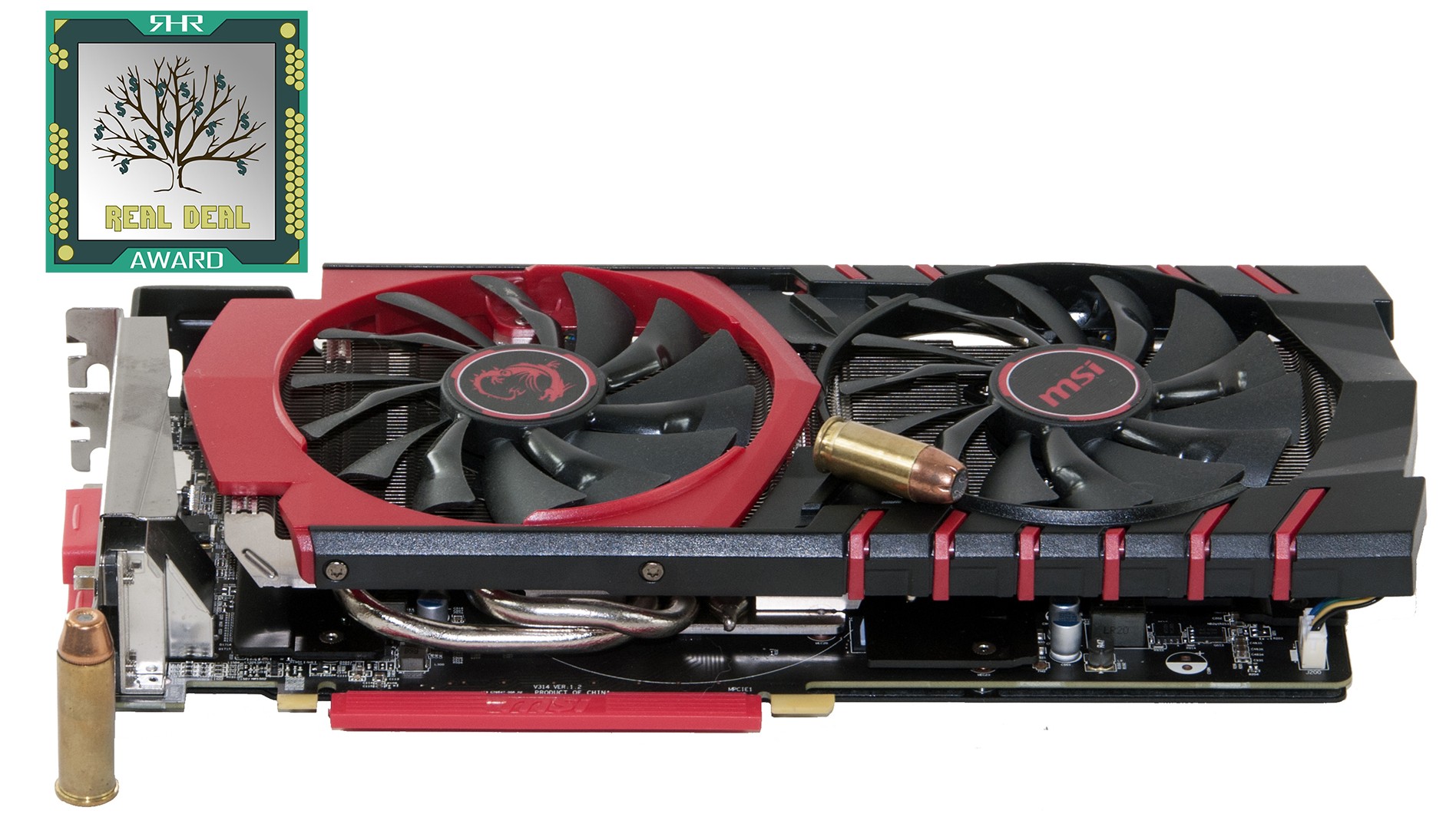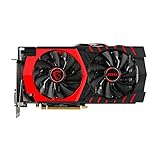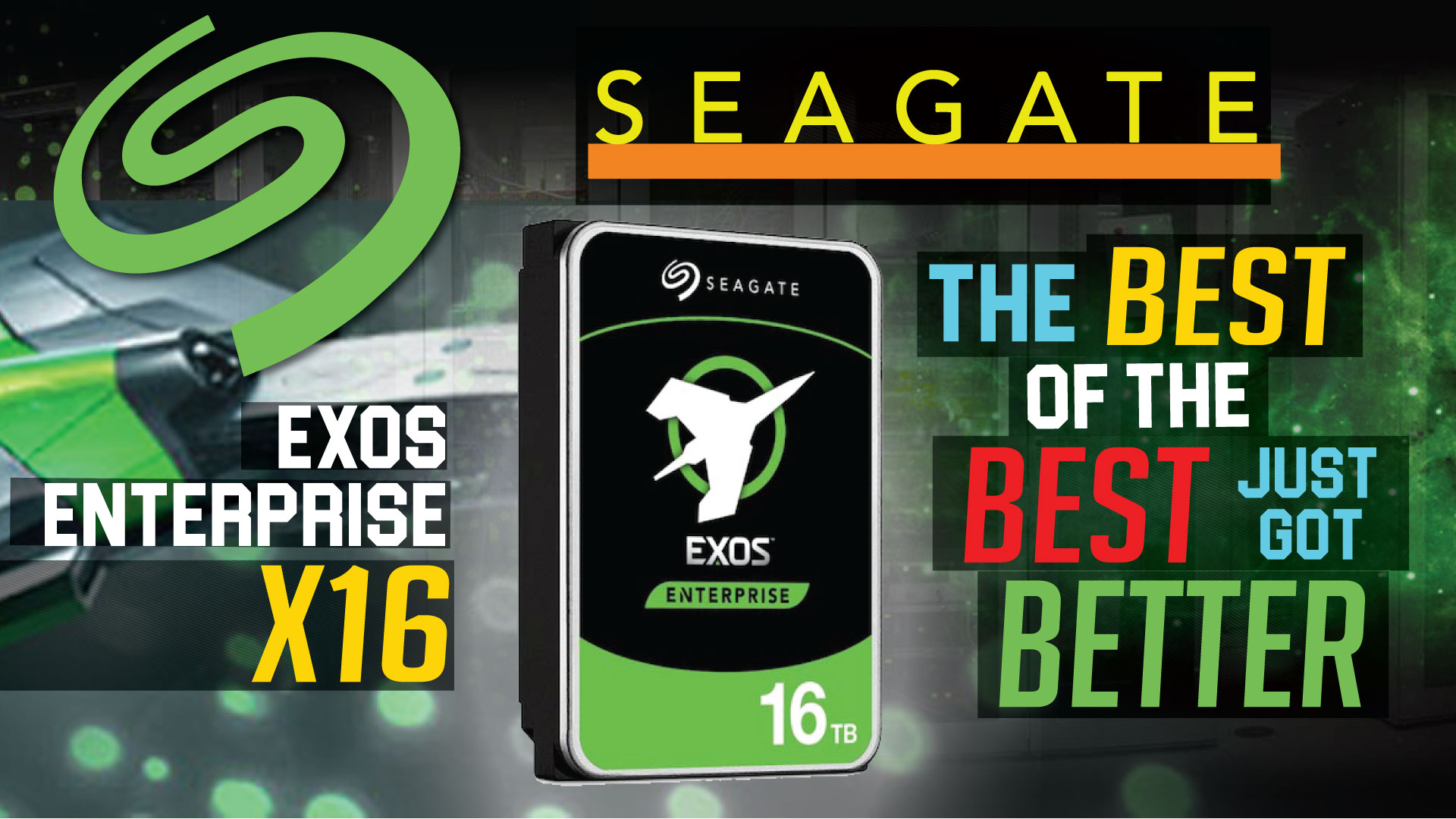Before we begin we do need to discuss the core that the R9 380 Gaming 2G uses. After all, it is the core that is the heart of a card and what makes or breaks it. There is no denying that the R9 380 Gaming 2G,like all R9 380 video cards use a core that was renamed from Tonga to Antigua. But to be blunt we have a lot less issues with AMD overclocking the Tahiti core and re-releasing it as an Antigua core than we did with the Pitcairn/ Curacao / Trinidad core that powers the R7 370.
While yes one could argue that the Tonga did share a lot with the Tahiti core it is based off, the fact of the matter is the Tahiti core was a GCN 1.0 core and the Tahiti was (the first) GCN 1.2 based design. That is a massive difference. More to the point there are countless examples of NVIDIA taking an older higher end core, modifying it slightly and releasing it as a lower numbered model in the next generation. To us it would be very hypocritical for consumers to slam one side and not the other for doing the exact same thing. In a perfect world every generation consists solely of completely new cores, however, since we don’t live in a perfect world it is much more reasonable to judge each rebadge on a case by case basis.
In the case of the R9 380 series, AMD has taken the R9 285, overclocked it from 918Mhz to 970Mhz, and made it a R9 380. The R9 285 had an original MSRP of $250, and the R9 380 has an MSRP of $200. That may not be as good as an entirely new ’80 core…but it still is pretty decent as the ’85 was a late comer to the 200 series and is based on newer tech than the rest of the 200 series. This goes double when you consider the fact that the R9 380 Gaming 2G is not a ‘reference’ R9 380. Instead MSI has given their R9 380 Gaming card a factory overclock on top of the AMD overclock. Specifically instead of running at 970MHz this R9 380 is a “GHz Edition” as it comes out of the box with the Antigua core running at a flat 1000Mhz. Equally important is while AMD carried over the same 5,550Mhz (effective) GDDR5 ram from the 285 series, this R9 380 card comes with a 100Mhz (effective) factory overclock on the RAM. Thanks to a wide 256-bit bus this increases the memory bandwidth from 176GB/s to 179.2GB/s. So with those facts in mind let’s take a look at the R9 380 Gaming 2G and judge based upon its merits not its lineage. As you can see the shipping container is classic MSI Gaming series. In other words its eye catching in a bold and brash way that most PC gaming enthusiast will like and maybe even love. The downside to this however is the fact that it is extremely similar to every other MSI Gaming video card shipping container and consumer confusion is a real possibility. So if you are looking at multiple models at your local bricks and mortar store be careful to not buy the ‘wrong’ model!
As you can see the shipping container is classic MSI Gaming series. In other words its eye catching in a bold and brash way that most PC gaming enthusiast will like and maybe even love. The downside to this however is the fact that it is extremely similar to every other MSI Gaming video card shipping container and consumer confusion is a real possibility. So if you are looking at multiple models at your local bricks and mortar store be careful to not buy the ‘wrong’ model! On first blush the R9 380 Gaming 2G does not look all that different from the R7 370 or even R9 390X. This is for the simple fact that MSI has used a rather cohesive approach to designing their Gaming series card – and they expect the card to speak for itself…not gaudy logos of half-naked women that graced certain AMD cards in the past. With that being said the R9 380 Gaming 2G is not a boring looking card. Since it does use the same red and black aesthetics this card may be a touch too aggressive for our tastes but certainly a striking looking card regardless.
On first blush the R9 380 Gaming 2G does not look all that different from the R7 370 or even R9 390X. This is for the simple fact that MSI has used a rather cohesive approach to designing their Gaming series card – and they expect the card to speak for itself…not gaudy logos of half-naked women that graced certain AMD cards in the past. With that being said the R9 380 Gaming 2G is not a boring looking card. Since it does use the same red and black aesthetics this card may be a touch too aggressive for our tastes but certainly a striking looking card regardless. When you do take a closer look at this card certain differences between the various models do start to become blatantly apparent. As this card is more geared towards the entry level, it is more reasonable to compare it to the R7 370 model rather than the R9 390X model. In other words it more accurate to list what features it has rather than what it does not have. At the physical level, the version of the Twin FROZR V that is used on the R9 380 Gaming 2G is much more capable and much more robust than the R7 370.
When you do take a closer look at this card certain differences between the various models do start to become blatantly apparent. As this card is more geared towards the entry level, it is more reasonable to compare it to the R7 370 model rather than the R9 390X model. In other words it more accurate to list what features it has rather than what it does not have. At the physical level, the version of the Twin FROZR V that is used on the R9 380 Gaming 2G is much more capable and much more robust than the R7 370. This is actually impressive as the R7 370 Gaming 2G was no slouch in the cooling department. Equally important is MSI was able to do this without making the R9 380 Gaming 2G that much bigger than the R7 370. Put simply the plastic fascia covers (nearly) only heatsink and not fresh air. While not a major concern, this was an issue with the R7 370 that was less than impressive. Considering the fact that the R7 370 and its smaller heatsink proved to be extremely potent we have very little concern about the TF V that comes with this model. After all, this model’s heatsink is not only longer and wider but also comes with an additional heat pipe!
This is actually impressive as the R7 370 Gaming 2G was no slouch in the cooling department. Equally important is MSI was able to do this without making the R9 380 Gaming 2G that much bigger than the R7 370. Put simply the plastic fascia covers (nearly) only heatsink and not fresh air. While not a major concern, this was an issue with the R7 370 that was less than impressive. Considering the fact that the R7 370 and its smaller heatsink proved to be extremely potent we have very little concern about the TF V that comes with this model. After all, this model’s heatsink is not only longer and wider but also comes with an additional heat pipe! Since this heatsink does have three heat pipes MSI was unable to use a Heat pipe Direct Touch style base for it, but the solid base of this model is extremely well finished and polished to a near mirror shine. This will increase the efficiency of heat transfer from the overclocked core to the three heat pipes…and then on to the air via the aluminum cooling fins.
Since this heatsink does have three heat pipes MSI was unable to use a Heat pipe Direct Touch style base for it, but the solid base of this model is extremely well finished and polished to a near mirror shine. This will increase the efficiency of heat transfer from the overclocked core to the three heat pipes…and then on to the air via the aluminum cooling fins. Also noteworthy is that not only does this card come with a much more capable core, and better heatsink but also comes with a secondary heatsink for the RAM. As with some other more expensive MSI Gaming models, MSI engineers’ have used a metal covering (with heat pads) that resides underneath the TF V heatsink. It may be missing any cooling fins but this does allow this metal plate to act not only as a heatsink but an actively cooled one via the waste air flowing down and over it from the TF V’s fans. This will keep the RAM modules cooler than they would be on the R7 370 model and actually does go along ways towards justifying the higher price tag.
Also noteworthy is that not only does this card come with a much more capable core, and better heatsink but also comes with a secondary heatsink for the RAM. As with some other more expensive MSI Gaming models, MSI engineers’ have used a metal covering (with heat pads) that resides underneath the TF V heatsink. It may be missing any cooling fins but this does allow this metal plate to act not only as a heatsink but an actively cooled one via the waste air flowing down and over it from the TF V’s fans. This will keep the RAM modules cooler than they would be on the R7 370 model and actually does go along ways towards justifying the higher price tag.
With that being said MSI has once again opted for AMD specified GDDR5 RAM modules that run at a rather sedate 5,500 effective rate (compared to NVIDIA specs which mandate 6K or 7K effective speeds). Thankfully MSI does factory overclock them to 5600 but this is actually less than what the R7 370’s comes with. Obviously this is easily corrected in the MSI AfterBurner software and it will be very interesting to see where these RAM IC’s top out at. After all, they do have access to a 256-bit wide bus, and with a more powerful core every extra bit can only help them compete against the newer Maxwell architecture. By removing the secondary heatsink and taking a good look at the PCB we can see that the R9 380 Gaming 2G uses a 5+1 power delivery subsystem instead of 4+1 like the R7 370. Once again this better Military Grade power subsystem helps to justify spending the extra money and opting for this card over a $150 card.
By removing the secondary heatsink and taking a good look at the PCB we can see that the R9 380 Gaming 2G uses a 5+1 power delivery subsystem instead of 4+1 like the R7 370. Once again this better Military Grade power subsystem helps to justify spending the extra money and opting for this card over a $150 card. We were also pleased to see that MSI has included a full length backplate for this model as this gives this card a lot more rigidity…and just looks better than a ‘naked’ card.
We were also pleased to see that MSI has included a full length backplate for this model as this gives this card a lot more rigidity…and just looks better than a ‘naked’ card.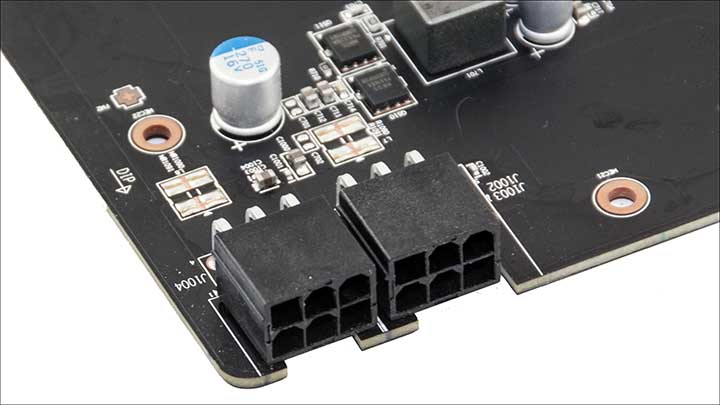 To help ensure that enough power is able to reach this power delivery system, MSI has opted for two 6-pin power connectors. There is two ways of looking at this decision, on the one hand this is standard for R9 380 cards and allows nearly any PSU the ability to run this video card (as they don’t need to worry about 8-pin connectors). On the other this is an overclocked video card and is meant for enthusiasts who will want to overclock it even further. Since this card is a 190 watt TDP card, but only has access to 225 watts of power (75 via PCIE slot, plus 75 per 6-pin) this does not leave as much wiggle room as we would like. ‘Luckily’ in testing this proved to be a non-issue and it was the core itself that bottlenecked long before power stability came became an issue.
To help ensure that enough power is able to reach this power delivery system, MSI has opted for two 6-pin power connectors. There is two ways of looking at this decision, on the one hand this is standard for R9 380 cards and allows nearly any PSU the ability to run this video card (as they don’t need to worry about 8-pin connectors). On the other this is an overclocked video card and is meant for enthusiasts who will want to overclock it even further. Since this card is a 190 watt TDP card, but only has access to 225 watts of power (75 via PCIE slot, plus 75 per 6-pin) this does not leave as much wiggle room as we would like. ‘Luckily’ in testing this proved to be a non-issue and it was the core itself that bottlenecked long before power stability came became an issue.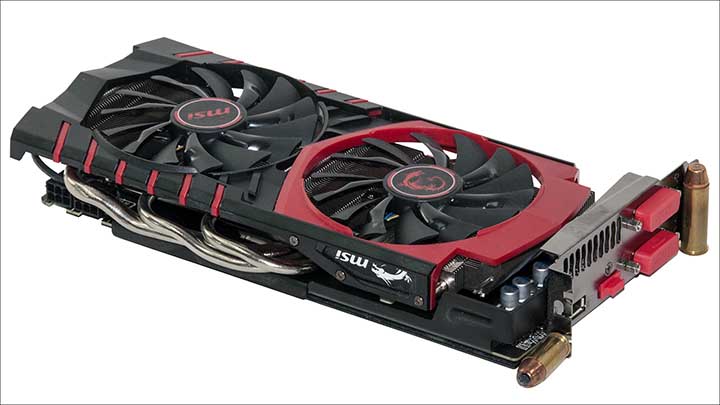 Moving on to the IO ports it is blatantly obvious that this card is wider than standard references allow for. This can potentially cause issues with some smaller cases, but for most cases and most consumers having their card sit taller in a case will not matter all that much. Basically as long as your case has an exhaust fan on the side panel – and can accommodate typical 25mm or thicker fans this really will be a non-issue. Just be aware of it and take it into consideration before purchasing any modern video card.
Moving on to the IO ports it is blatantly obvious that this card is wider than standard references allow for. This can potentially cause issues with some smaller cases, but for most cases and most consumers having their card sit taller in a case will not matter all that much. Basically as long as your case has an exhaust fan on the side panel – and can accommodate typical 25mm or thicker fans this really will be a non-issue. Just be aware of it and take it into consideration before purchasing any modern video card. As for the IO ports the R9 380 Gaming 2G is classic AMD through and through. . The bottom row you get to a single mini-DisplayPort, a single full size HDMI port, and a DVI-D port; while the top row is split nearly evenly between exhaust slits and a single DVI port. Overall it is a very nice selection that should satisfy most consumer’s needs nicely. Or at least will be as long as you do not want to go for three monitors in Eyefinity. On the positive side, since this card is based upon the newer GCN 1.2 and not on GCN 1.0, not only will you not need a physical bridge to CrossFire this series, you can also use this card with a FreeSync monitor. That too is a rather major plus in this series favor over cheaper AMD cards.
As for the IO ports the R9 380 Gaming 2G is classic AMD through and through. . The bottom row you get to a single mini-DisplayPort, a single full size HDMI port, and a DVI-D port; while the top row is split nearly evenly between exhaust slits and a single DVI port. Overall it is a very nice selection that should satisfy most consumer’s needs nicely. Or at least will be as long as you do not want to go for three monitors in Eyefinity. On the positive side, since this card is based upon the newer GCN 1.2 and not on GCN 1.0, not only will you not need a physical bridge to CrossFire this series, you can also use this card with a FreeSync monitor. That too is a rather major plus in this series favor over cheaper AMD cards.
